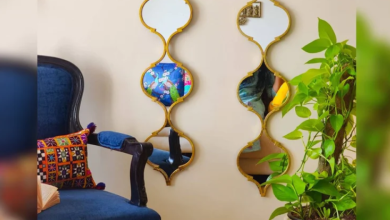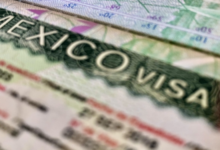Step into Tradition: Exploring Beaded, Native, and Canadian Moccasins for Women

Moccasins have a deep-rooted history and cultural significance, especially in Native American and Canadian Indigenous traditions. Known for their comfort, craftsmanship, and unique designs, these footwear styles transcend simple functionality. For women, moccasins offer a stylish connection to history, tradition, and artistry, blending cultural heritage with modern fashion.
From intricately beaded designs to traditional leather forms, moccasins embody the spirit of craftsmanship while celebrating the stories of the people who make them. In this article, we explore the significance of beaded, Native, and Canadian moccasins for women, the craftsmanship behind them, and how they continue to make strides in both cultural and contemporary fashion.
The Rich History of Moccasins
Moccasins have been worn by Indigenous peoples in North America for centuries. Originally designed as soft leather shoes, they were intended for practical use—keeping feet warm and protected while walking on varied terrains. The design varied depending on the region and tribe, with each group adapting moccasins to their specific environment. For example, some Indigenous groups from colder climates lined their moccasins with fur, while others in drier climates made them thinner and more breathable.
The term “moccasin” comes from the Algonquin word “makasin,” which means “shoe.” These shoes were typically made from animal hides, such as deer, buffalo, or moose, and sewn together using sinew or thread made from plant fibers. Today, moccasins continue to be made from leather, though more modern materials may also be used.
Beaded Moccasins: A Canvas of Art and Heritage
Beaded moccasins are one of the most iconic and recognizable forms of Native footwear. The intricate beadwork that adorns these shoes is not just decorative; it often carries cultural symbolism and meaning, reflecting the history, beliefs, and identity of the wearer or maker. These beads are meticulously sewn onto the moccasin, creating patterns that range from geometric designs to representations of animals, plants, or other important symbols.
The Art of Beadwork
Beadwork on moccasins is a form of storytelling, with each design serving a specific purpose. Certain patterns are meant to convey strength, protection, or good fortune, while others may represent tribal affiliation or family lineage. The colors used in beadwork are also significant, often representing different elements of nature or cultural values. For example, red can symbolize life or strength, while blue may represent water or the sky.
The intricate process of creating beaded moccasins requires skill, patience, and a deep understanding of the craft. Traditionally, the beadwork was done by hand, with each bead carefully stitched onto the leather in a process that could take hours or even days. Today, modern moccasin makers may use machines to assist in some parts of the process, but many still uphold the traditional methods of hand-beading.
Beaded Moccasins as Fashion and Function
While beaded moccasins were originally made for practical use, they have also become a fashionable item. Many women wear beaded moccasins as statement pieces that add a unique, handmade touch to their outfits. These moccasins are often paired with casual wear for a bohemian or earthy style, but they can also be dressed up for special occasions.
Beyond their beauty, beaded moccasins remain functional and comfortable. The soft leather molds to the foot, providing a comfortable fit that improves over time. Whether worn indoors or outdoors, beaded moccasins offer a stylish way to honor Indigenous traditions while enjoying modern comfort.
Native Moccasins: Symbolism and Heritage in Every Stitch
Native moccasins are more than just shoes; they are an expression of culture, craftsmanship, and identity. Indigenous peoples from different tribes and regions each have their own unique styles of moccasins, often incorporating specific elements that reflect their environment, lifestyle, and spiritual beliefs.
Cultural Significance of Native Moccasins
For many Indigenous groups, moccasins represent a connection to their ancestors and the land. The craftsmanship that goes into making a pair of Native moccasins is often passed down through generations, with each maker learning the skills and techniques from elders. This transfer of knowledge ensures that the cultural significance and traditional methods are preserved.
Many Native moccasins also feature symbolic designs. For example, the use of quillwork, beadwork, or fringe can carry specific meanings related to the wearer’s family, community, or spiritual beliefs. The patterns and colors used may also represent elements of nature, such as the sun, moon, animals, or plants that hold cultural importance.
Modern Interpretations of Native Moccasins
Today, Native moccasins are worn by both Indigenous and non-Indigenous people, as they have become a popular fashion item. Many contemporary Native designers create moccasins that blend traditional techniques with modern aesthetics, allowing them to appeal to a wider audience while still honoring their heritage.
For Indigenous women, wearing Native moccasins can be a way to express pride in their culture and connect with their roots. For non-Indigenous women, purchasing Native-made moccasins from authentic artisans supports Indigenous craftsmanship and helps preserve these traditions.
Canadian Moccasins: Celebrating Craftsmanship and Tradition
Canada has a long history of moccasin-making, particularly among the Indigenous communities in the northern regions. Canadian moccasins, like those made by the Métis, Cree, or Ojibwe, often feature distinctive designs that set them apart from other styles. These moccasins are made for both practicality and beauty, designed to withstand harsh winters while reflecting the cultural heritage of their makers.
The Craftsmanship of Canadian Moccasins
Canadian moccasins are typically made from soft, durable leather such as moosehide or deerskin. In colder climates, these moccasins are often lined with fur or wool to provide extra warmth, making them ideal for winter wear. The sole of the moccasin may be thicker and more durable than other styles, offering protection from the snow and cold.
What sets Canadian moccasins apart is the attention to detail in their construction. Many are adorned with beading, quillwork, or embroidery, making them not only practical but also visually stunning. These moccasins are often worn as part of traditional regalia during cultural events, powwows, or ceremonies.
Canadian Moccasins in Fashion
Canadian moccasins have become popular across North America and beyond, with many women choosing them for their comfort, warmth, and style. They are often worn as winter footwear, but they are versatile enough to be worn indoors as cozy slippers or even as casual shoes for everyday wear.
With the rise in popularity of sustainable and ethical fashion, many women are drawn to Canadian moccasins for their handmade quality and the use of natural materials. Purchasing moccasins from Indigenous artisans not only supports sustainable practices but also contributes to the preservation of cultural traditions.
How to Choose the Right Moccasins for You
When selecting a pair of moccasins, there are several factors to consider:
Material
Look for moccasins made from high-quality leather, such as deerskin, moosehide, or elk. These materials are soft, durable, and will mold to your feet over time. If you’re looking for warmth, consider moccasins lined with fur or wool.
Craftsmanship
Support Indigenous artisans by purchasing authentic handmade moccasins. These are often more durable and feature intricate beadwork or designs that reflect the culture and heritage of the maker.
Purpose
Are you looking for moccasins to wear indoors or outdoors? Soft-soled moccasins are ideal for indoor use, while thicker, rubber-soled moccasins are better suited for outdoor wear.
Design
Consider the aesthetic you’re going for. Beaded moccasins offer a more decorative look, while plain leather moccasins provide a simple, classic style. Some moccasins feature fringe or embroidery, adding a bohemian or rustic touch.
Conclusion
Moccasins are more than just footwear—they are a reflection of history, culture, and artistry. Whether you’re drawn to the intricate beadwork of Native moccasins, the practicality of Canadian styles, or the blend of tradition and fashion that moccasins represent, these shoes offer a meaningful connection to the past while remaining relevant in today’s fashion world.
By choosing authentic, hand-crafted moccasins, you not only embrace comfort and style but also support Indigenous artisans and help preserve their rich traditions. So step into tradition, and let your moccasins carry you forward in both fashion and heritage.








